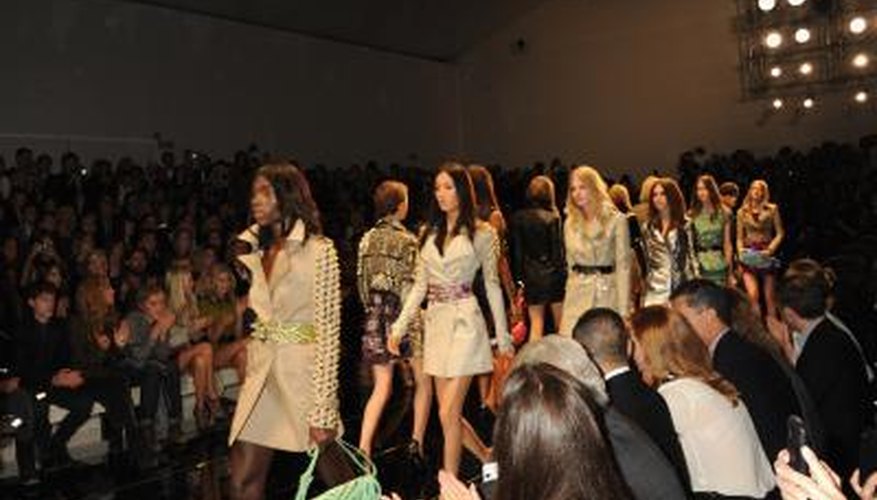The hard-tailored business suit became synonymous with the power suit in the 1980s, as movies like "Working Woman" epitomised the wardrobe of the career-focused woman. By the mid-1990s, a softer silhouette was introduced into business attire, featuring a less constructed jacket and a looser bottom. Today hard and soft tailoring has been revamped by contemporary designers to create various silhouettes that are modern and flattering.
Hard Tailoring
The major difference between hard and soft tailoring is the construction. Hard tailoring features angular shoulder pads and stiffer materials which give the garment its structured shape. To create these silhouettes, the supporting fabrics that line the garments are just as important as the fabrics used for the garment's outer shell. Stiff linings keep collars sharp and sometimes reinforce the bodice so that it is more constrictive. Bottoms that match this jacket are usually equally tailored -- often close-fitting, trousers and skirts have centre creases, darts or seams.
- The major difference between hard and soft tailoring is the construction.
- Hard tailoring features angular shoulder pads and stiffer materials which give the garment its structured shape.
Soft Tailoring
To achieve the more feminine look of soft tailoring, the shoulders have little to no padding, so are rounder. Softly constructed clothing can also be oversized; an example is the "boyfriend" jacket. Many times soft tailoring forgoes heavy interfacing, allowing the shell fabric to fall free and move with the body. Bottoms that accompany this suit can include wide-leg or loosefitting trousers and wrapped, a-line and softly draped skirts.
- To achieve the more feminine look of soft tailoring, the shoulders have little to no padding, so are rounder.
- Many times soft tailoring forgoes heavy interfacing, allowing the shell fabric to fall free and move with the body.
Contemporary Fashion
Both hard and soft tailoring are used in fashion and still appear on contemporary catwalks. Prominent in British fashion, which has a long tailoring legacy, hard tailoring has shown up in collections of Burberry. These collections have featured structured military-inspired coats, trenches and jackets, with pronounced shoulders and almost corset-like, nipped-in waistlines. In contrast, French fashion label Celine and Chloe, which are the epitome of feminism and romanticism, have showcased soft, rounded jackets matched with flowing skirts and trousers in their collections.
- Both hard and soft tailoring are used in fashion and still appear on contemporary catwalks.
- In contrast, French fashion label Celine and Chloe, which are the epitome of feminism and romanticism, have showcased soft, rounded jackets matched with flowing skirts and trousers in their collections.
Perception of Tailoring
Because hard tailoring tends to draw its inspiration from men's and military garments, the clothing usually is more severe and masculine. Softer garment construction is usually associated with femininity, and as a result, these tailoring techniques can have an impact on the way people perceive a woman. Female political figures often use tailored garments to help communicate their objectives, according to the "Vogue" article "Fashion Politics." Powerful women, including Hillary Clinton, have used hard tailoring as a symbol of strength, while the First Ladies of the United States and France, Michelle Obama and Carla Bruni-Sarkozy, have leant towards softly tailored suits and garments, expressing a more feminine style.
- Because hard tailoring tends to draw its inspiration from men's and military garments, the clothing usually is more severe and masculine.
- Softer garment construction is usually associated with femininity, and as a result, these tailoring techniques can have an impact on the way people perceive a woman.
